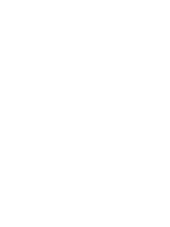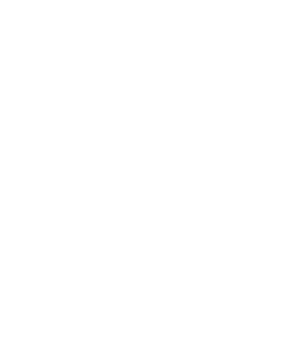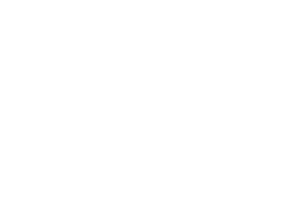 |
 |
 |

|
Valmantas Gutauskas: Reflections
|
|
 |
LITHUANIAN GLASS
-The development of the art glass in the 2nd half of the 20th century and the beginning of the 21st century in Lithuania
dr. Raimonda Kogelyte - Simanaitiene
|

|
Posted 14 February 2014
|
Share this:
|
|
The article describes the art school and the development of the professional decorative glass. It goes deep neither to the old historic glass of factories and workshops that was made in Lithuania and Poland nor to the achievements of Lithuanian stained glass. Individual educational experiments of art glass specialty in Lithuania started in the Kaunas State Institute of Applied and Decorative Arts in the 20th century 5th - 6th decade. The institute extended the tradition of Kaunas Art School.
|
|
|
|
|

|

|

|
Officially there was no art glass specialty yet, but the institute's professor Stasys Usinskas with his disciples F. Usinskaite and V. Blazyte tried not only stained glass, but other glass techniques as well. Gradually, these artists began to create decorative glass containers (mostly vases), using their personal base, established in Kaunas "Aleksotas" glass factory. The dish decor of these artists reflected a broad scale of different motives and stylistics. It is not difficult to notice here the echoes of St. Usinskas' favorite pre-war modernism (most - constructivism), the stylization of Lithuanian folk art motives and the latest themes of socialist realism. A bit later (in the 7th decade) their works took a trend towards designed, abstract decor, particularly highlighted in the workings of F. Usinskaite, V. Blazyte and J. Usinskaite.
|
|

Stasys Usinskas "Athletes", 1962
|
|
|
|
|
|
|
Another stage of the increasing number of decorative glass artists and their creative activity in Lithuania is associated with the appearance of glass artist specialty in 1961. It was established in Vilnius Art Institute in order to develop the glass art more consistently and comprehensively. At that time, the division line of glass art in Lithuania became pretty obvious. Stained-glass makers had been trained in the country for several years, whereas there had been only few decorative glass artists. In 1961 only three students, Grazina Didziunaityte, Anita Slegel and Bronius Bruzas, were admitted to the newly announced art glass specialty. Their first teacher became previously mentioned glass artist J. Usinskaite, who worked with that group from 1961 till 1963 and directed them towards decorative dish engraving. J. Usinskaite had not only mastered the lectures of her father St. Usinskas, but she finished the studies of glass art in Estonia, too.
While studying in Tallinn she got acquainted with the popular there glass-carving technique, that was widely used in the past in the glass manufactures of the Grand Duchy of Lithuania. Contemporary glass specialists were able to revive and extend the decoration method, the use of which had deep historical traditions in our country. This technique gives the particular refinement, luxury and the beauty of finish for the works of glass. Unfortunately, it was not possible to master this technique without having any base for glass studies in the Art Institute. In 1964-1965, J. Usinskaite left for Czechoslovakia and the students lost their teacher, one of the few decorative glass specialists of Lithuania.
|
|
|
|
However, a part of studying youth wanted to carry out the final works in artistic glass specialty and to receive diplomas of glass artists. Consequently, it was decided to invite Estonian artist Silvia Raudvee, who had grasped the specifics of glass perfectly. Her choosing was not accidental. After finishing her studies in Tallinn, S. Raudvee had worked for a long time at the "Neman" glass factory in Belarus, where Lithuanian students (G. Didziunaityte, A. Slegel, B. Bruzas, A. Zilys) performed their practice and created their diploma artworks. These glass enthusiasts, even when faced with a lack of technical base in Lithuania, remained faithful to the art glass field throughout their whole lives. G. Didziunaityte and A. Zilys became especially famous - they were treated as the main representatives of the Lithuanian glass art in the 8th and 9th decade. The first works of these authors were of quite deep colour tones, based on the use of Lithuanian folk motifs (mostly ornaments, sculptures) in the decor of dishes.
Despite the already discussed individual achievements of the first glass artists, the glass art school in Lithuania began to take shape only in the 2nd half of the seventies. This period showed more significant educational and creative alterations of decorative glass. In mid-seventies the glass specialty was begun to be taught in the former Kaunas St. Zukas College of Applied Arts.
|
|
|
|
The second circumstance can be the fact that this department was formed as a faculty of Industrial Arts, focused on the specifics of design and the applied art. The lack of designers and the need of them in Lithuanian art glass industry was evident at that time. In the period of 1982 - 1983 the Kaunas Department of Applied Arts was converted into the Kaunas Department of Industrial Arts. It was drawn a strict teaching trend, supporting the training of such decorative arts professionals, who were capable of working in industry. This trend corrected the teaching programmes, the study tasks directed towards rationality and aesthetics. Also, it motivated the art glass for mass production and for the glass in interior use of utilitarian nature. Indeed, some of the designed vases, chandeliers, decorative glass panels, and a wide range of dinnerware became the standards of industrial production. The glass specialty in the faculty was taught by G. Didziunaityte (but only for a year), A. Binkis and V. Janulionis, who is currently working as the Associate Professor at the Glass Department.
|
|

|

|

|
These artists focused on the independent from factory production studio glass movement, which had been popular for a few decades abroad. Also, they followed the global trends of art glass development, promoted the expression of glass artists' sculptural nature, not seldom associated with the grotesque, ironic worldview and with the associative plastic deformation. The teachers gave new tasks for the students, conveyed theoretically known, but in Lithuania still not used glass techniques, that changed the artistic image of glass works in such aspects as idea, form, glassity and others.
|
|

Grazina Didziunaityte "Vilnius forenoons". VIII decade
|
|
|
|
|
|
|
In 1995 - 1996 the newly established professional glass studio in Kaunas faculty dramatically improved the creating and working conditions of glass art teachers and students. It led to a more original material expression of their works. They started to use the glass of diverse quality and to treat it in different ways for their course works and diploma works. These techniques included blowing, moulding into the form, moliration, pate de verre, adhesion, cold processing (engraving, poisoning, grinding, polishing) techniques, and archaic methods of glass production. The mastering of earlier mentioned complex techniques broadened individual stylistic possibilities of artists, supplemented the artistic image of glass works with associative expression and visual effects, which were specific only for glass material: glass optics, shiny and frosted glass, the combinations of thin panes and thick glass mass, the contrasts of a rough texture and a smooth, polished surface.
|
|
|
|
A wider field of artistic ideas reveals in the works of the young generation artists. Generally they select the sculptural and postmodern means of expression, foster the personal techniques and individual style. (Works of A. Palis, I. Borodina, E. Kartanaite, Z. Navikaite, A. Andruleviciene, J. Pociute, I. Stulgaite and others). In order to receive a wider range of vision, the glass artists numerously attended the international glass art exhibitions and symposiums. From 2000 international glass exhibitions are constantly being organized in Lithuania, too. It refers to the international glass art exhibition "Vitrum Balticum". It is clear that today's glass art school focuses on the most important global achievements of art glass. These priorities, as well as the influence of the visual and conceptual art to the formulation of the teaching tasks and better learning conditions led to the new features of young generation glass artists' works: antiutilitarism, the individuality of artistic expression, the intensifying sculptural origin, the spread of postmodernist thinking. All these factors made the Lithuanian school of art glass closer to the current spreading state of the world's art glass.
©Art researcher, dr. Raimonda Kogelyte – Simanaitiene, 01/10/2009
|
|
|
|
|
|
|